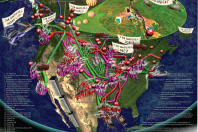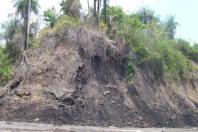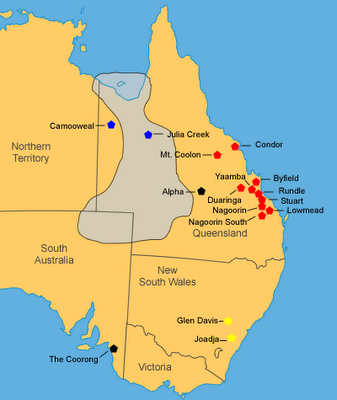Australia
The plot:
Australia has large amounts of oil shale and has engaged in exploration and attempted extraction for a few decades. The last decade has seen an attempt in fits and starts to open a commercial mine, using Canadian derived technology, in an area that opponents say seriously threatens the Great Barrier Reef.
Details:
Multiple deposits totalling several hundred bn bbl of synthetic oil in place, estimates are of 24 bn bbl recoverable.
Previous exploration and research into mining and development of deposits has yielded thousands of barrels of oil out of both New South Wales as well as Tasmania. NSW was the home of oil shale mining until the 1950's.
In the 2000's the Stuart deposit in Queensland is researching into possible commercial production. At the onset of oil shale mining development, the primary operator was Suncor Energy of Canada (using a Canadian made technology for bitumen extraction). Thousands of barrels a day of synthetic oil were produced before the plant went into its current inoperative state. Suncor sold their interest in the project in 2001. Currently the project is led by Queensland Energy Resources Limited (QERL). In 2004 the previous mine (using a different retorting technology) closed and was decommissioned.
Most other deposits throughout Queensland (where the bulk of commercially viable deposits remain in Australia) are shallow and would require strip mining followed by a retorting in a plant. Some areas have been identified as possible In-Situ operations.
Original plans for the Stuart Plant would have seen a possible bbl of synthetic crude production of up to 200 000 bpd at the final stage. Those plans have been halted but the development permit has simply moved to QERL, no environmental assessment for plans of that size have taken place.
Australia's Great Barrier Reef has been cited as threatened with toxification as a result of the mining of the Stuart deposit very close to the east coast, due to the large quantities of waste toxic water collected in the extraction process. In addition to vast water and air pollution concerns, local residents complained of illnesses caused by the stench of previous mining, mining that never reached a commercial level.
Australia would see Queensland-- one of the more populated areas of the country-- have a single mine that would account for over 1/4 of total greenhouse gas emissions. Oil shale is estimated via the currently proposed technology to emit four times the emissions as conventional oil, coming in with a higher carbon intensive footprint than tar sands in Canada.



